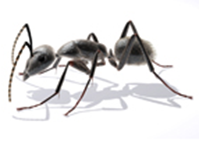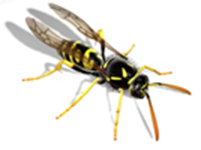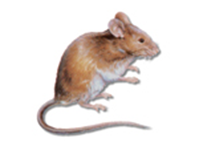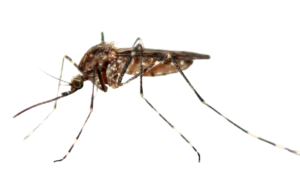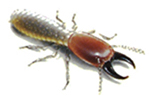Termite Control Services
TERMITES, Gone For Good, Guaranteed.
Talk to an Expert
We’ll be in touch to personalize your pest protection plan:

Protecting Your Home and Health from Termites
___
Termites, with their insidious nature and ability to infiltrate even the smallest crevices, pose a serious threat to properties. These pests not only cause structural damage but also compromise the safety and well-being of occupants. Termites can infest homes and businesses silently, feeding on wood and cellulose materials, leading to costly repairs and extensive damage.
Trust Pointe Pest Control for comprehensive termite management services. Our team of experts is equipped with the knowledge and tools to detect, treat, and prevent termite infestations effectively. With our proactive approach, we safeguard your home and health from the destructive impact of termites.
Don’t wait until it’s too late—take action today to fortify your property against the threat of termites. Contact Pointe Pest Control for expert solutions and peace of mind.
Termite Infestations:
___
Termites, among the most relentless and destructive pests, can swiftly infiltrate homes or businesses, exploiting even the tiniest openings. Effective termite management starts with a deep understanding of their behavior and habitat preferences.
Termites are attracted to cellulose-rich materials, making wood and other organic matter prime targets for infestation. They thrive in warm and humid environments, often colonizing areas with moisture issues or wood-to-soil contact. Termites primarily feed on cellulose, found in wood, paper, and plant materials, causing extensive structural damage to buildings and furniture.
At Pointe Pest Control, we recognize the urgency of addressing termite issues before they escalate into significant infestations. Our team is equipped with the expertise and resources to implement effective termite control measures tailored to your specific needs.
Don’t let termites compromise your home’s integrity and your peace of mind. Contact Pointe Pest Control today for expert solutions and protect your property from termite damage.


Prevention Measures:
___
Collaborative efforts among communities play a crucial role in mitigating termite infestations. By working together, neighbors can effectively prevent the proliferation of these destructive pests. Coordination efforts may involve collective inspection initiatives and structural modifications within apartment complexes and neighborhoods.
Individually, homeowners can take proactive steps to termite-proof their properties by identifying and sealing potential entry points. This may include filling cracks in foundations, treating wooden structures with termite-resistant coatings, and maintaining proper ventilation to reduce moisture levels.
At Pointe Pest Control, we understand the importance of community engagement in combating termite infestations. Our team is dedicated to providing comprehensive termite control solutions tailored to the specific needs of each neighborhood. Together, let’s create termite-free environments for healthier and more resilient communities.
Why Pointe Pest Control?
At Pointe Pest Control, we provide the peace of mind that your home and family are protected from unwanted pests. We are committed to providing you with the best pest control and customer service you can find. Live pest-free with Pointe Pest Control!
CALL (610) 277-7575
FOR YOUR FREE ESTIMATE TODAY

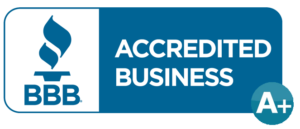

Free Pest Control Quote
Get in touch with us today and we’ll give you a free quote.
Call (610) 277-7575
or fill out the form below
UNDERSTANDING THE SEASONS
Weather has a profound effect on pest life cycle. Most pests, rodents and insects breed aggressively during spring and go through periods of hibernation during autumn and winter.
+ SPRING
Moisture in the spring enhances breeding grounds for insects. This is the time when pests are laying their eggs and developing their nests. It is important to stay on top of pests before these eggs and immature nymphs develop into breeding adults.
+ SUMMER
Pests are in high gear in the summer. If the immature stages of the pests were not controlled earlier, they are now reproductive adults. The offspring of these reproducing adults are out foraging for food and water to continue their exponential development.
+ AUTUMN
As the evenings and mornings begin to cool, insects get the signal it is time to find a nesting site for the winter. The warmth and protection of your home becomes a very attractive harborage. Spiders actually follow their prey as they move into warmer structures.
+ WINTER
Colder weather has arrived and the pests are set in their nesting sites. Insects do not die off in the winter and magically reappear in the spring – they continue to feed and breed, although at a slower pace. Pests who have found their way into your home enjoy the warmth and continue to function.
Common Pests
ANTS
Chances are, you have had a run in with an ant infestation. Because their colonies can contain anywhere from several thousand to a million individual ants, they will always be a pesky insect problem.
SPIDERS
With their eight legs, multiple eyes, and poison fangs, it is easy to see why so many people are terrified of spiders. Our technicians will get them out of your home so you can rest easy.
Wasps/ Bees
All you need to do to attract most stinging pests is go outside with your favorite drink, meat, or picnic items. If you get too close to their nest, you will quickly understand why stinging pests are a problem.
Rodents
Not only are rodents extremely destructive, they can also transmit a large number of terrible diseases, viruses and parasites. Eliminating a rodent infestation will help you protect your home and your health.
Mosquitoes
Mosquitoes are best known for their annoying habit of feeding on blood to help in egg production. No matter what stage in their life cycle, mosquitoes tend to be located in standing water.
Other Pests
There are a lot of different pests out there. At Pointe Pest Control, we can help you identify the pest and create a specific treatment plan. No matter the type of pest or the size of the infestation, we have a solution.
Pointe PEST CONTROL REVIEWS


